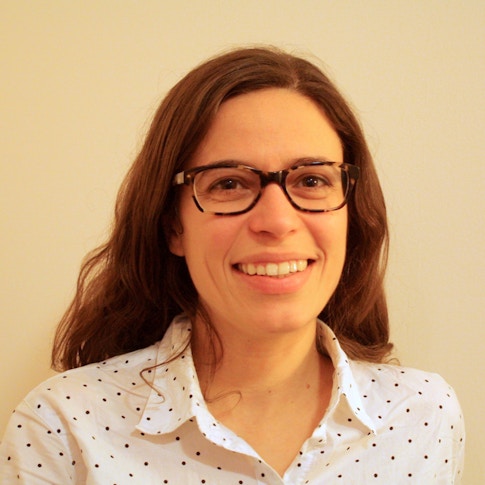Keeping an Eye on the Brain as a System

Long before she became a systems neuroscientist, Mariana Cardoso was a small child who “used to enjoy disassembling things at home.” Perhaps it was a clue that an early career interest in architecture — literally the opposite of disassembling things — probably wouldn’t take. Instead, Cardoso studied physics in college. “Architecture is more of a lonely path, but being a scientist is much more interactive because you can never solve the science alone,” she says. “You have ideas that you can try, but you always rely on someone else to correct you and to point you into new directions.”
Cardoso soon experienced her own scientific “redirection” when, feeling unsatisfied by the questions she was tackling in physics, she applied for a Ph.D. program in neuroscience. “I knew I wanted something with an experimental component,” she recalls. After earning her Ph.D., Cardoso worked on brain-machine interfaces at the University of California, San Francisco; now as a postdoctoral researcher at New York University, she studies the neural circuits involved in amblyopia, a vision development disorder colloquially known as “lazy eye.” In general, she seeks to understand how the brain turns sensory input into behavior. An edited version of my interview with her follows.
What was switching from physics to neuroscience like for you?
I had a kind of reductionist arrogance. I thought, “Well, in the end the brain is going to have to obey the laws of physics: It’s composed of cells, and those are composed of molecules, and molecules are composed of atoms.” Pretending that we will be very able to use some of the things we know from physics to understand the brain, if you just kind of scale it down.
I was very interested in understanding what the role for energy would be in the brain. In physics, if you minimize the energy in a complex system, it works really well to help you understand the interactions in it. I thought maybe the brain works that way too, because we make different decisions depending on whether we’re hungry or not. I thought, “I’m sure there will be a way to connect both of these ideas.” But it’s not that clean.
What’s an example of how studying the brain isn’t as “clean” as what you were used to in physics?
The brain in general doesn’t tell you where it is looking for information. Right now, I’m talking with you with my eyes open, and there is a lot of visual information that is coming into my brain. But the brain itself is really not using too much of this information while I’m paying attention to our conversation, and it’s complicated to know what it is using.
I’m working on trying to understand what small groups of neurons are doing in areas at the start of visual processing. That’s my interest: trying to understand what the brain is doing as a system. Where is the brain actually “reading” information from at any given time? And how do we know?
Why do you study amblyopia?
Amblyopia is characterized by two eyes having a different ability to resolve images: One eye has a behavioral deficit, the other does not, even when using appropriate glasses. And so with amblyopia you have the ability, within the same subject, to check what happens with one neural pathway and compare it with the other one.
We have evidence from anesthetized animal studies that individually, the neurons at the start of visual processing are not responding very differently to information that comes from the good eye or the amblyopic eye. So it seems that the brain is not exactly amblyopic in the initial areas dedicated to vision, even though we know behaviorally the animal is amblyopic. Is there something that’s disrupting how the visual information is integrated and passed along to decision-making areas? That’s why amblyopia is so interesting for me.
What question about the brain would you like to see answered in the course of your career?
The one that I would really love to know is: How does the brain coordinate information? We know there is a lot of hierarchy in distributing information, but how is that done by the brain?
Another question, a bit further from what I’m working on, is: How do we integrate any new experience in ourselves? With every interaction, we kind of become something else. How are we integrating that information — or not? Maybe these two questions are actually the same.